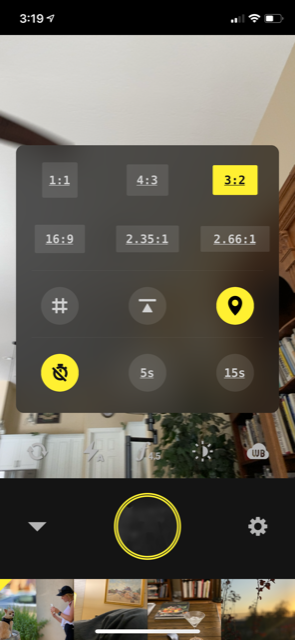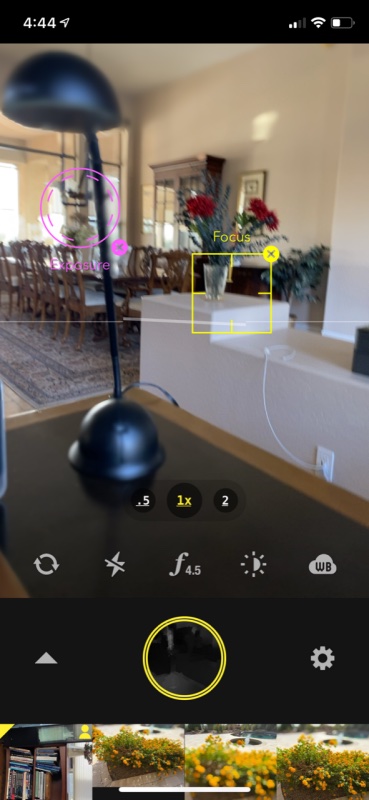The world of photography is irrevocably changed.
Click here for an index of all iPhone articles.
Here’s an index of the iPhone 11 Pro pieces:
Part I – The revolution realized
Part II – Upgrading
Part III – The ultrawide lens
Part IV – The Normal lens
Part V – The Telephoto lens
Part VI – The Focos app
Part VII – Quirks and anomalies
Part VIII – HDR and the Night Mode
Part IX – The digital zoom function
Part X – A lens correction profile for the ultrawide optic
Back in 1971, having diligently saved my pennies for two years, I finally picked up my first serious camera, a Leica M3, nicely used, with a collapsible 50mm Elmar lens. We were made for one another and great snaps and – more importantly for this impoverished student – prize money, came to me like a tsunami. The possibilities seemed endless – one camera, one lens, one film and one developer. TriX and D76, of course. It worked for HC-B. Who was I to argue?
I felt that thrill, along with an awestruck realization that anything was possible, just twice in my life as a snapper. The second time it came in the combination of the iPhone 11 Pro and a $13 application named Focos. The latter was recommended to me by a friend who just happens to be a professor at CalTech. A blown away friend of the prof’s had demonstrated Focos to my friend, who was in turn blown away. Now there are three exploded heads to be found. I have joined the caste of the blown away.
First, before we get to the fancy stuff, Focos offers a raft of aspect ratios, from square to letterbox.

By contrast, the iPhone offers just square, the unutterably boring 4:3 of Kodak prints of yesteryear, and the too-wide-most-of-the-time 16:9. Naturally, I immediately switched to 3:2 because that’s the way Oskar Barnack decreed it and it’s how I learned to see with the film Leica. I still see in 3:2 today, unless I’m watching a movie.
But that’s just the tip of the Focos iceberg. Focos integrates the picture taking and cataloging/processing functions into one app. There’s a horizon level which beats anything I have used, using rangefinder Leica style alignment lines plus a haptic buzz when the camera is level. You can’t miss it, even in bright light when the lines are hard to see. That’s great for architecture photographers and for ultrawide lens users and with a killer ultrawide in the iPhone 11 and iPhone 11 Pro, it could not be more useful.
Now the magic begins as every still image captured by the iPhone 11records its own depth map, telling the software the distance of every point of detail. Yes, that even includes images taken with the ultrawide, which is fixed focus. And Focos allows you to add your favorite lens blur from a choice of 15 classic lenses, not to mention your specification of focus point (just touch the screen) and aperture. It’s all trivially easy to do, the only problem being it gets harder as your head has just exploded.
Long time readers may recall my ruminations about the Lytro camera which tried to bring depth data to image recording. That valiant effort failed, courtesy of a minuscule capital budget, and I rather unfairly styled it “a solution looking for a problem”. It was the quality and implementation of the solution that were poor. The idea itself, enhancing creative options in post processing, remains valid and Apple’s infinite funds and the genius of a brilliant Chinese developer behind Focos have made the Lytro dream a reality.
Let me cut to the chase.
Here’s a straight-out-of-camera ultrawide image, the fixed focus lens option of the iPhone’s trio of choices:

As usual the vast dynamic range is automatically controlled and everything is sharp from here to eternity.
Here are some of the lens profiles available for blur in Focos:

Now, loading the image in Focos, I touched the central area of the yellow Lantana blooms, and cracked the aperture slider to f/2. As it was Barnack time I elected the blur profile of the Elmar lens and here is the happy result:

Another touch on the horizon and a second later I got:

So now you can get an ultrawide field of view with crazy narrow focus – or not – and your lens blur of choice.
And just as I was writing the above, contemplating the evening cocktail, who should email me but that self same CalTech prof, the one with the large brain which dictates widened doors in his abode, who tells me that you can distinguish focus and exposure points when taking the picture using Focos. Sure enough. You touch the ‘x’ sign on the yellow focus rectangle and a purple circle appears which is the exposure metering area. Oskar is now spinning in his grave.

This is serious magic.
The world of computational photography, with an additional layer of depth data stored with every image, has changed how we see picture taking and processing for ever. I cannot wait to explore the creative possibilities of limited depth of focus, something unavailable in my last decade with Micro Four-Thirds hardware, where everything is pretty much sharp all the time. The world of Auto Blur is now a great deal easier to enjoy.
Other magic? Why, yes. You don’t like the direction of the lighting? The 3D map and Focos can fix that. Do I want to do that? No. But it’s nice to know that I can.
By the way, for these aging eyes the iPhone display is too small to work on. I simply export the image to the iPad where I have also installed Focos, and have at it on a decent sized display.